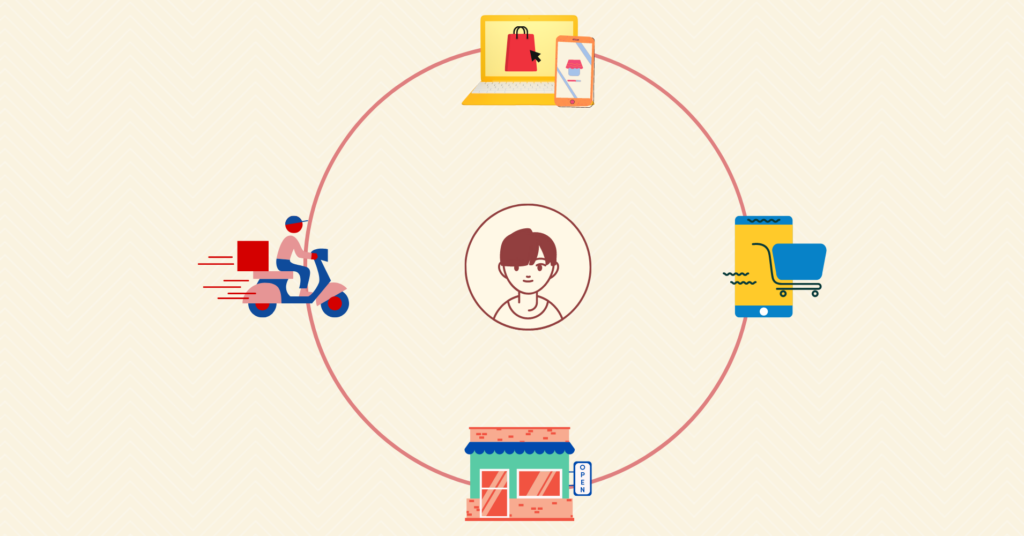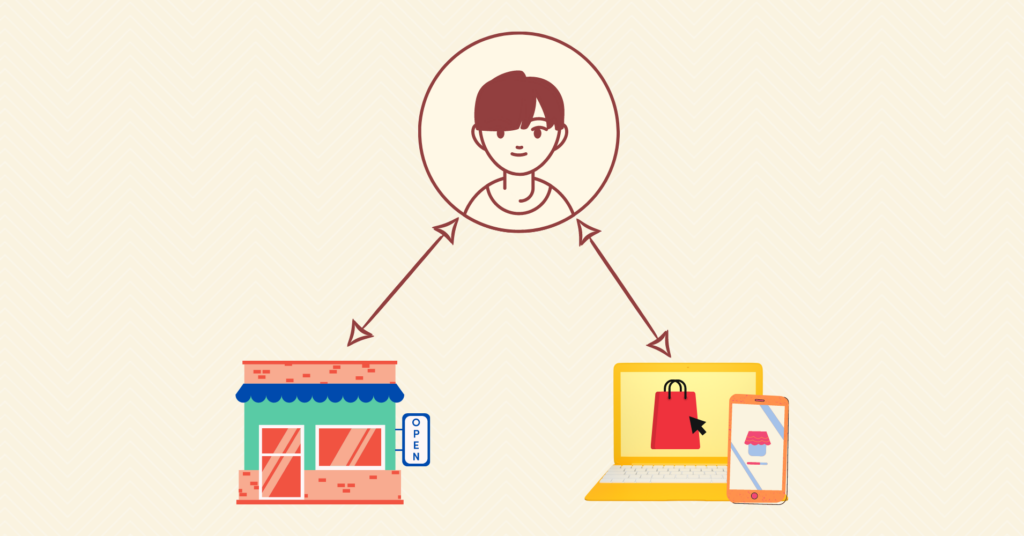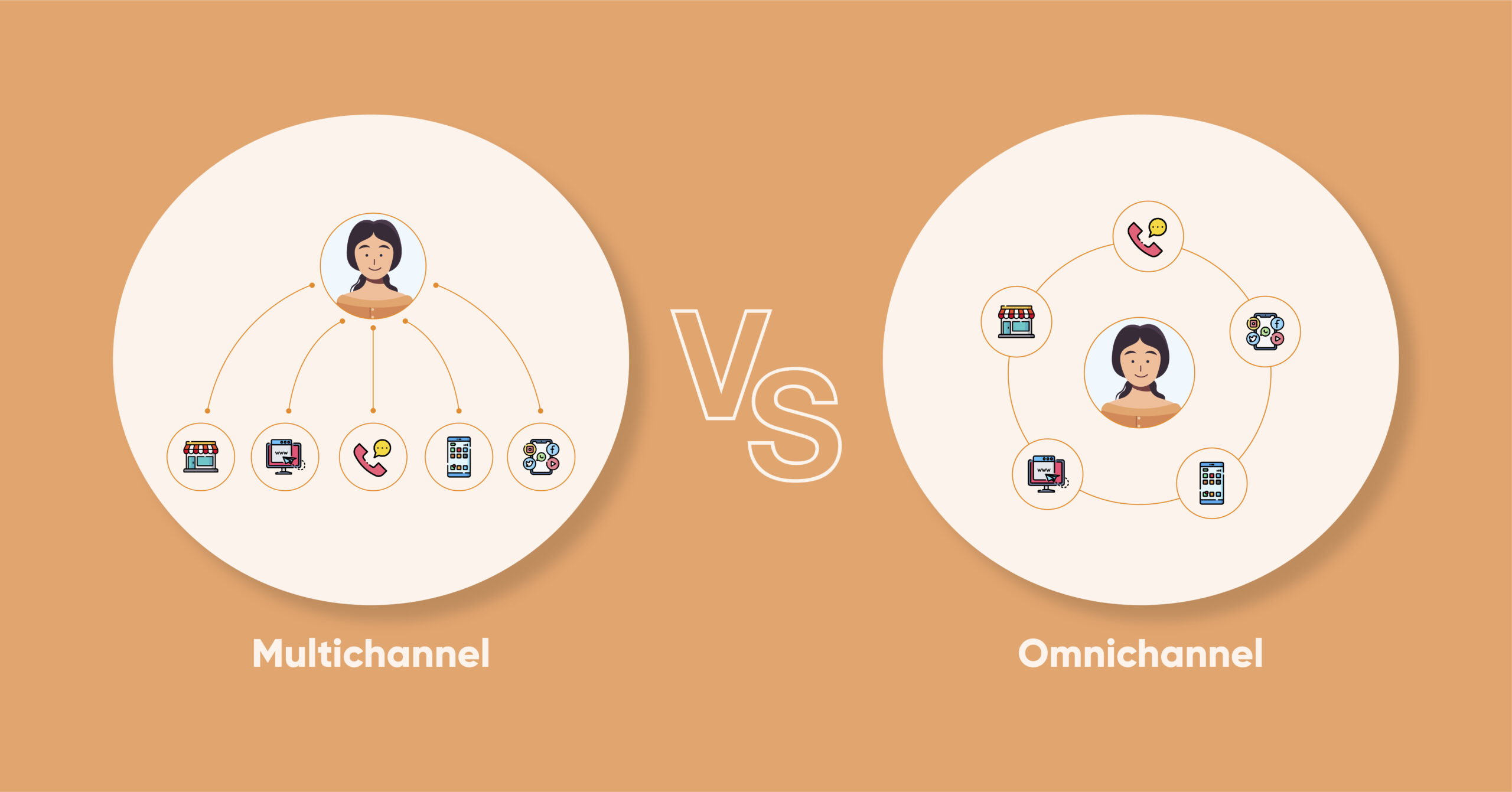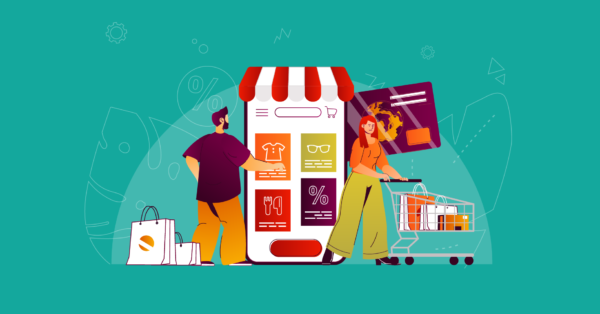Pretty sure you have experience with online shopping by now. 2022 is here already, and it’s only natural for online retails to switch to more digital ways. And seeing how consumer preferences change these days, we’d say omnichannel vs multichannel shopping experience is a hot topic now.
Shopping isn’t confined to physical stores anymore. Marketers, people in sales, and customer support react to consumer behavior changes. As online shopping feels more comfortable, technological advancement and marketing strategies take things two steps ahead.
Wherever the customer is or whatever device he is using, shops have created ways to reach them anytime and anywhere.
The communication approach can either be connected or not connected. This is where the idea of omnichannel and multichannel shopping comes up.
This topic might sound a bit familiar to you if you have followed our previous article on omnichannel marketing strategies.
But here, our discussion is different.
Definition (omnichannel and multichannel marketing)
In simple terms, “Omni” means “In all ways” or “places.” This marketing approach is about being present everywhere for customers! It includes-
- Advertising on every platform
- Selling online and offline
- Offering customer service everywhere, etc.
As a result, it creates an integrated customer experience. If customers change their buying channel, they can start from where they left on another, online or offline. In this process, the customer is the center.
On the other hand, multichannel retail won’t keep the record of the customer. All marketing channels are separated, and the process focuses on the brand or product only. The online and offline channels aren’t synchronized.
Omnichannel vs multichannel shopping experience
Since different shopping channels are either connected or not connected, shopping experiences are also different for customers.
Each channel is connected and focused on the customer only. So, what exactly happens here?
Let’s say Tyler is a customer. We’ll be using his shopping process to explain omnichannel vs multichannel shopping.
Tyler’s omnichannel shopping- Scenario 1

- While browsing the internet one morning, Tyler saw a nice pair of jeans in an online clothing shop’s social media
- He clicked on the link to the store or downloaded the app. He browsed their website a little but didn’t buy
- On his way to work later, he saw a digital billboard advertisement or the physical store of the same brand
- Now, he can either scan the code from the billboard and reserve or purchase it right away or go to the store
- He decides to go into the physical store and made a reservation on those jeans so that he could pick them up after work
- Later that day, he picks them up, and the retail employee brings them to him. He is now on his way to the fitting room.
- However, he sees a shirt that goes well with his new jeans. He scans the QR code and asks the store employee to deliver it to him in the fitting room.
- But the shirt is out of stock in his size, and the store tells him to put his address down for home delivery when it’s restocked.
- Tyler buys the jeans and pays half advance for the shirt.
- The store keeps Tyler updated about the shirt’s stock (through website chat service, social media, emails, or text messages) and delivers it right to his house.
- Tyler now pays the rest of the money and gives a five star on the store’s website and social media for the excellent service!
Tyler’s multichannel shopping- Scenario 2

- Tyler just crossed his purchasing consideration stage and now wants to buy the pair of jeans he likes
- He browses on the brand’s website, app, or social media from his laptop but gets distracted and closes the window
- Later at work break, he remembers again and opens the store’s online site on his mobile phone
- But Tyler’s previous activity on the website from his laptop isn’t recorded on the website
- Tyler goes through the whole buying journey once again and finally buys those jeans
- Or he may want to avoid the hassle and just buy the jeans from the physical store on his way home
- He goes to the store afterward and looks for the jeans to buy
- If the size fits him, he buys them. And if not, he can choose to reserve if the store allows
- But the product will not be delivered to him. He has to pick it up from the store
- If Tyler chooses to change one online channel to another, he will have to insert all his account details and fill the shopping cart once again
- And the price or stock details of the same product may vary in channels
What’s the difference?
Tyler had no problem with his buying journey in scenario 1 when the clothing brand used omnichannel marketing. He was the center of attention, and the brand only wanted a seamless customer experience for him.
He chose his buying channel independently, and each channel was synced to make his journey smooth.
But in scenario 2, he had to go through the buying journey twice since no brand channel was synced and no channel kept his records. Social media, online stores, apps, offline stores, and text services compete. Tyler has to choose among the channels.
What would be your reaction if you were in Tyler’s shoes for scenario 1 or 2? Which marketing style seems more comfortable to you?
Things to look out for

Suppose your product business is confused between choosing omnichannel and multichannel. You need to keep some things in mind that might create some challenges.
Possible challenges in omnichannel
- Customers may not like the idea of stores keeping their records
- Getting text messages or DMs on social media might seem like a privacy breach
- Too many emails or texts are a turn off indeed
- Being there for every customer on every channel requires a high-tech and creative marketing team
- One channel might malfunction, resulting in chaos where the customer can’t find what he wants, and other channels can’t keep track.
Possible challenges in multichannel
- Channels and retail touchpoints not being interconnected is a problem itself
- Multiple channels with multiple teams mean multiple goals and objectives
- Each team works differently than the other team, and there’s no shareability of information
- Customers might prefer online reservation and pick-up from physical stores, which isn’t possible if the online and offline channels aren’t synced
Shopping in 2022- Omnichannel or Multichannel?
Brands and businesses need loyal customers to sustain themselves in the long run. And an omnichannel approach helps increase customer loyalty because it’s centered around the customer.
During the pandemic, online shopping rates spiked, and reservation or buying online and getting the products delivered right to your front door has been pretty standard. We’re now past that, and the habit of shopping online still keeps increasing.
Omnichannel system blends online and in-person shopping experiences to ensure a smooth shopping journey. Different kinds of CX results in higher brand reputation and customer loyalty.
The multichannel approach is focused on the product or the business, which means customers can’t get the desired hands-on service they want from retailers. Multiple channels will have different stocks, return policies, customer service, and even prices.
Tyler had no trouble buying the jeans and shirt he liked when it was omnichannel in our imaginary scenarios. But it wasn’t the same case in multichannel.
Omnichannel customer engagement and retention rate is higher than in multichannel. There are more benefits and importance to omnichannel marketing, even though handling so many channels at once might seem like a tough job. After all, a happy and satisfied customer is what matters.
Final notes
Pick one- Your customers’ needs or your company’s needs? Customers are the core reason for your existence in the online or offline markets. Ultimately a business can only run if the customers or users are happy with its products or services.
In the debate of omnichannel vs multichannel shopping experience, omnichannel wins by a mile. eCommerce future and success depend on omnichannel strategies.
If you want to move to omnichannel now, you need to be prepared. This marketing approach requires all hands on deck! Your social media, website, shop’s app, physical store, text messaging services, emails, etc., all have to be in sync to give the customers a seamless shopping experience.
That’s all for this time. Let us know if there’s anything else you’d like to know about next.


